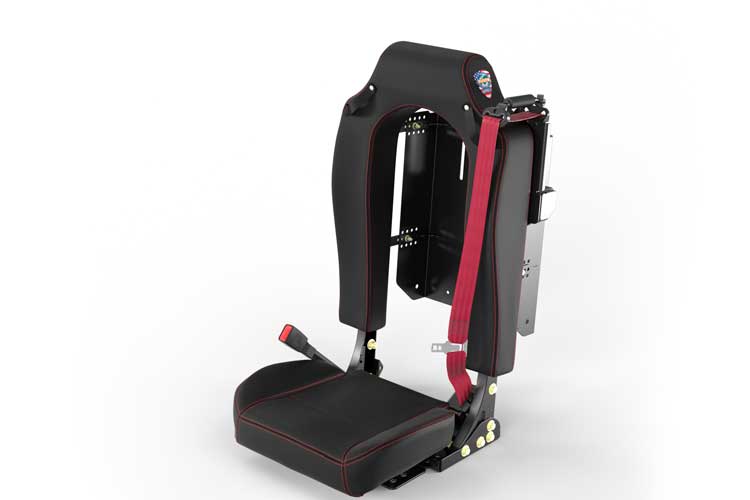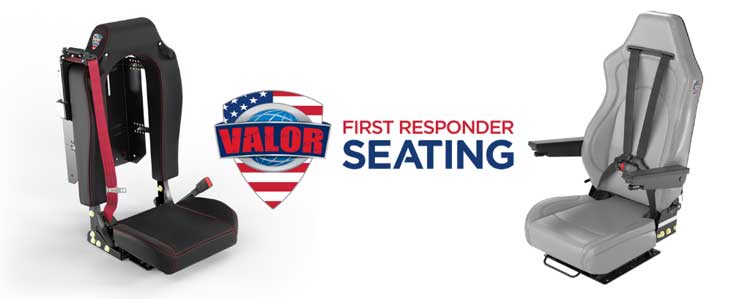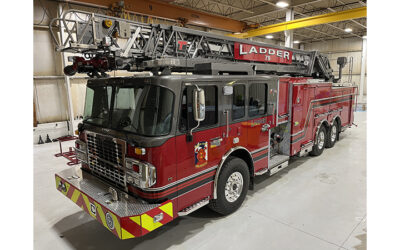In the fire industry, seconds can make a difference when it comes to saving lives. With the focus on efficient seat design for firefighters, Valor First Responder Seating recognized the importance to have the quickest ingress and egress possible while on the job.
Firefighters come in all shapes and sizes. As with many industries, we must account for the 5th percentile female at 108 pounds up to and beyond the 95th percentile male at 225 pounds. Along with the body comes the turnout gear, which can add 50 pounds or more of additional weight, making it very difficult to find a seat that allows them to sit correctly but also comfortably. The goal of creating an efficient seat is to provide the firefighter with the space and ergonomics to comfortably sit and arrive on scene ready to engage.
Valor designs, tests, and manufactures thousands of seats for extreme-duty use based on decades of engineering and design experience. Many people think a seat is a seat and focus solely on its exterior look and trim, but a seat design is far more than what meets the eye. Most seats can be broken down into four primary areas: Seat Frame Structure, Seat Mechanisms, Seat Cushion Foam, and Upholstery and Trim. Detailed engineering principles are required to maximize the overall seat performance.
Seat Frame Structure: This is truly the foundation of the seat on which all else is built. This is the steel frame underneath the surface, which is engineered first and foremost to meet all the structural and safety requirements of the seat. There are multiple test requirements, including Federal Motor Vehicle Safety Standards (FMVSS) and National Fire Protection Association (NFPA) requirements that must be met. In some of the more challenging FMVSS requirements, seats with seat belts attached must meet a total applied load requirement at 8,000 to 10,000 pounds without failure. This simulates the performance of the seat in a crash situation. The structure also needs to meet durability standards, meant to depict a 10-year life cycle. Many of these tests are done first with Computer Aided Design (CAD) models to ensure performance is met prior to making any production tooling.
Seat Mechanisms: Paired up with the seat structure are the mechanisms, which may include an air suspension, seat tracks for fore and aft adjustment, recline gears, dynamic backs, etc. These mechanisms are designed with the firefighter in mind to ensure maximum safety, comfort, and adjustability for the complete range of body types. As with the seat structure, all the mechanisms must meet all the same standards, and thus proper design and testing is critical. Beyond these specifications, the suspension plays an incredibly important role in comfort, fatigue, and overall health. The seat suspension is designed to remove the energy from the road which is transmitted into vehicle floor before the energy reaches the firefighter. Additional tests are run focused on durability and functionality including seat lift and hold capacity. While it may seem extreme to design the suspension to lift and hold 500 pounds of dead weight, this is extremely important to provide full use for all firefighters while providing maximum durability and integrity of the seat over the life of the vehicle.
Seat Cushion Foam: There are three main design criteria for foam: comfort, aesthetics, and durability. The seat foam must provide the appropriate amount of flexibility, shape, and support without degrading over its period of use. Seat comfort is designed with multiple CAD models using ergonomic criteria to ensure proper fit and function. Whereas a sports car design may be more focused around function and thus have extremely aggressive design shapes to keep the driver from moving side to side, the firefighting seat typically is focused upon fit given the wide range of users. Comfort can then be proven with objective data by use of pressure mapping, providing a computer-generated output showing key pressure metrics of the seat in order to ensure maximum comfort in the design. When it comes to materials, multiple options exist. Polyurethane (PU) is the most common as it strikes the best option for comfort, durability, and cost. Along with selecting the best foam material option for the application, it is also critical to define the appropriate cushion firmness in order to maximize comfort and durability.
Upholstery and Trim: Lastly comes the cover material and design. Valor prides itself by providing best-in-class upholstery with a strong design focus from concept to execution. Along with this focus, USSC provides high durability by use of military-grade fabrics while incorporating triple stitch seams for maximum strength and durability, as well as a high-quality appearance. The design and selection of these materials and sewing pattern help to maximize comfort and perception while giving the best performance for day to day use.
We believe these four areas make our Valor First Responder Seating products the best in the industry. Our seating has been tested from the ground up to give you the best experience when seating is the last thing on your mind.
For more information, visit http://www.usscgroup.com/valor-first-responder-seating/.







